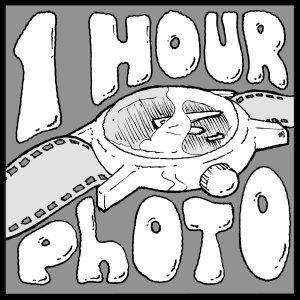 One Hour Photo is a series of casual one on one conversations with a variety of people I admire who in one way or another have helped me along the way collecting or repairing classic film cameras. Each article is a summary of a roughly one hour conversation with the person being featured. These may be big names in the collector’s world, or may be someone you’ve never heard of before. Whichever the case, I found them interesting enough to talk to, and hopefully you will enjoy reading about them.
One Hour Photo is a series of casual one on one conversations with a variety of people I admire who in one way or another have helped me along the way collecting or repairing classic film cameras. Each article is a summary of a roughly one hour conversation with the person being featured. These may be big names in the collector’s world, or may be someone you’ve never heard of before. Whichever the case, I found them interesting enough to talk to, and hopefully you will enjoy reading about them.

For the first One Hour Photo, I recently sat down with Rick Oleson, who if you’ve done any level of research on a classic camera, you’re bound to come across his name with one of his many Tech Notes drawings of camera repairs, or his replacement focusing screens for TLR and SLR cameras. I’ve sought out Rick’s help in the past with previous cameras, and have even bought one from his personal collection so I thought it was worth a sit down to learn more about him.
Mike E – Hi Rick! Thanks for putting aside some of your time to chat with me. Since I started reviewing and researching classic cameras, I’ve seen your name and your website mentioned more times than I can count on a huge variety of cameras. Your website is loaded with tons of great repair info, tutorials, and other reference information. How did you get started with all of this?

Rick O – Hey Mike! I’ve always liked photography and grew up in Batavia, IL which is a far west suburb of Chicago and home to Fermilab. I went to school and received a Bachelors of Fine Arts degree in Industrial Design, and had experience in engineering and art. In my younger years, I worked as a draftsman and enjoyed drawing. I used to draw cartoons for fun, but enjoy drawing cars and other things too.
Sometime in the early 1980s, I worked for a friend named Dave Krewson at his camera store, Abington Photo in Clarks Summit, PA. In addition to sales, Dave’s shop took in all kinds of camera repairs and contracted out the major brands like Nikon, Leica, Pentax, etc to other repair shops in the area. But when something would come in that needed work that there wasn’t anything who was familiar with, he gave it to me.
Although I was never a full time employee of the shop, I would take the cameras home and tinker with them until I fixed whatever was wrong. Without a lot of documentation or repair information about each model, I would often make drawings of the cameras for my own reference in case I ever encountered a similar one again.
I started my website way back when eBay would accept photos but did not host them. You had to have a URL to link to your images in the listing. This would have been in the late 1990s, I think a little over 20 years ago. I started the website just to have a place to park photos and gradually began adding stuff to it.
ME – I’ve seen many of your drawings of cameras on your website, and you offer a “Tech Notes” CD for sale, are these the same notes?
RO – Yes they are. I repaired cameras for Dave until the early 2000s, and afterwards would continue to tinker with other models in my own collection and for friends. I accumulated probably 1400 to 1500 pages worth of notes covering all kinds of different models.
ME – Do you still offer repair services for cameras through your website?

RO – Not currently. In the last 6 months or so, I’ve been thinning my collection of about 200 cameras trying to get it down to just my favorites. Since Thanksgiving, I’ve sold somewhere around 30. When I get the collection down to the ones I want to keep, I’ll likely work on the ones that need help, and then after that, I may consider it, but it’s not something I want to commit to yet.
ME – Looking through the cameras that you have information on your website and the pictures of your collection on Flickr, it seems like you like a little bit of everything. You seem to have an interest in American made cameras as I see a lot of information about them on your site. It seems that every collector has a favorite brand or niche, what is yours?
RO – I wouldn’t say I have one brand that is my favorite, but there are some models like the Contax S-series of SLRs that I have a fondness for. I also like American 35mm cameras made by Argus, Clarus, and Perfex. I also like Russian, and East German cameras too. I don’t have much interest in cameras from before the 1930s, and the electronic era of the 70s and 80s just doesn’t interest me either. My collection is a little bit of everything, but I generally don’t have multiples of the same kind.
One of my favorite books is called “Glass, Brass, and Chrome”, by Kalton C. Lahue and Joseph Bailey which covers the golden era of American 35mm cameras. The book was originally published in the early 1970s and went out of print. The same two authors later wrote a second book about collecting American cameras that covered a lot of the same information. I ended up selling my original copy of “Glass, Brass, and Chrome” and later regretted it. It has since been reprinted, and you can buy it on Amazon, so for anyone interested in that era of American cameras, it’s a great read.
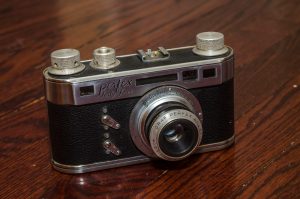
ME – You mentioned Perfex, and you actually sold me one of your Perfex 44s in the past which I have previously reviewed on mike eckman dot com. What a wonderful camera and it worked as perfectly as you said it would!
RO – A funny story about that camera is that I never intended to have two of them. I had been searching for a good example of that camera for quite some time, and when I eventually found one, I bought it, but before it even showed up in the mail, I saw another one in just as great of shape, so I picked it up too. They both worked well and spent some time on my shelf, until I sent it to you.

ME – I’m curious if you’ve ever had any experience with what I consider to be the “holy grail” of American 35mm cameras, the Kodak Ektra. I’ve been trying to get my hands on one for quite some time, and I know a collector who has one, but values it so greatly, he doesn’t trust the US Postal Service to send it to me, even as a loaner.
RO – Yeah, I probably wouldn’t either. One time, a customer bought one of my BrightScreens from me and he wanted it installed into his Hasselblad. I had never made one for that camera before, so he agreed to send it to me, and I would fit it in for him and then using his camera as an example, come up with instructions for others to follow. The problem is, the guy did such a terrible job at packing the camera, it took a lot of abuse on it’s way to me, that by the time it arrived, it was in pieces. I didn’t even touch the camera and sent it back.
ME – Yes, your BrightScreens, I had wanted to ask you about those too. I know you’ve been offering viewfinder screens for cameras like the Rolleiflex and other TLRs for quite some time. How did you get started with that?

RO – Sometime in 2005, I had been browsing eBay and saw a listing from a Chinese seller for a replacement focusing screen for a Pentacon Six that I had. This new screen had a split image focus aide in the center that I thought would be useful on mine, so I bought it. When it arrived, it was considerably larger than the old one from the Pentacon Six. After contacting the seller and digging through the fine print in the listing, I was told that these were universal fit screens that needed to be cut down to fit the camera. Furthermore, the replacement screen was just a thin piece of acrylic that was much thinner than the thick plano-convex glass screen that the camera came with. So I was told to cut down pencil erasers to use as spacers to take up the space so that the screen would fit in the correct position.
With my background in product design, I felt confident I could do this, but was surprised that this was the expectation of anyone buying these screens as the degree of difficulty for someone not familiar with cutting screens might be quite high. I saw this as an opportunity to make screens for other people, so I contacted the seller and bought a large quantity of screens and a small milling machine and began cutting down screens to various sizes.

I started by making screens for all of the TLRs in my own collection so that I could sell them pre-cut and ready to go. If there was a model someone wanted a screen made for that I didn’t already have, I would offer to have the person send me their camera, and I would measure and cut down the screen and install it for them for free, while using theirs as a template so that I could offer screens to other people for the same camera. I listed them for about double the price of what I paid for them thinking that people could still buy the originals straight from China, but they would have to assume all of the risk in cutting their own screens. If they buy from me, there would be no risk.
I did this for about 8 or 9 years, until one day one of my buyers, named Evan Dong had mentioned that there was another seller that offered a better screen that was brighter than mine on eBay and asked if I could offer a screen like that one. I looked into it and ordered one of the brighter screens and when it arrived, could see that it was indeed, brighter than mine.
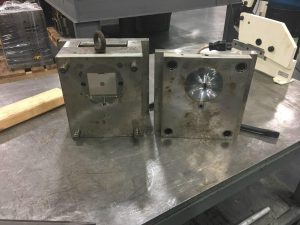
As it turned out, the seller’s husband had been making these brighter screens, but had passed away and his wife was selling off all his remaining inventory. I came to an agreement to buy these screens in bulk and cut them down like I had my original screens, which I differentiated by calling the original design, the SplitScreen and the new ones the BrightScreen.
This continued until about a year ago when the original supply became depleted. Not wanting to give up on offering both screens, I contacted the seller again and offered to buy the original mold for the screens, which she still had in her garage. I arranged payment for the mold and had it shipped to a molding company in Ohio to have it put back into production.

The first pressings of new BrightScreens were completed in early 2018. I sourced the raw materials from a company in New Jersey, the blanks were pressed in Ohio, and I would finish them here in my home in Kentucky, meaning that for the first time, the screens were 100% made in the US compared to the originals which were sourced from Japan.
ME – How much brighter is the BrightScreen compared to the SplitScreen, or even the original ground glass screens on earlier TLRs? Have you ever done an independent comparison?
The same guy who originally alerted me to the BrightScreens did his own objective analysis between my two screens and a few other aftermarket ones that were out there and he put together a chart that I have on my website. His measurements are not scientific, but they confirm a huge improvement over the original ground glass screens. I also have a before and after comparison between the stock screen on a Rolleicord III and my Split screen.
ME – So now that you offer both the original SplitScreen and BrightScreen, are they available for all of the same cameras?
RO – No. The uncut SplitScreen is based on a mold for the Seagull TLR and the BrightScreen is based off the Mamiya RB67 which is larger, so I can cut the BrightScreen to fit more models like some Rolleiflex and Rolleicords that can’t accept the SplitScreen.
ME – Are there any TLRs or medium format SLRs that you can’t make screens for?
RO – With the larger size of the BrightScreen, I can cover nearly every true reflex camera out there. For cameras like the Soviet Lubitel, Argus Seventy-Five, or Voigtländer Brillant that don’t have a true focusing screen, I can’t do anything with those as the design just isn’t compatible.
ME – Besides brightness and size, are there any other differences are there between the two screens?
RO – Well, as the name implies the SplitScreen has a horizontal split image focus aide in the center like you’d see in many 70s and 80s 35mm SLRs, whereas the BrightScreen has a large microprism circle in the middle. Each screen also has grid lines that I can customize per the buyer’s wishes as well.
ME – What is the cost difference between the two?
RO – I charge $50 for the SplitScreen and $80 for the BrightScreen regardless of which camera it is trimmed to fit for.
ME – I recently reviewed the Voigtländer Superb TLR and I liked that camera very much. As you might expect from a 1930s TLR, the viewing screen was very dark. With old TLRs, normally I like to open up the viewfinder and clean the ground glass and reflex mirror, and if the mirror has desilvered badly, I’ll replace the mirror. But the Superb was different from any other TLR I’ve handled, and I couldn’t figure out how to open it up.
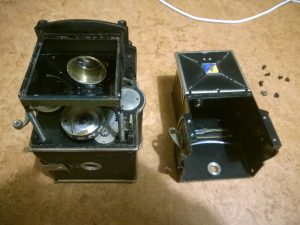
RO – The Superb is interesting. I’ve never owned one, but I have worked on them before, and I know there are a couple of screws that are behind the leather on the camera that need to be removed. You’ll need to be careful not to damage the leather when peeling it back, but once you do that, the entire viewfinder comes off as one piece and then you have access to the viewing screen and reflex mirror beneath it.
ME – Do you ever replace mirrors on your cameras?
RO – Whenever someone needs a mirror, I refer them to Martin Seelig (seller ID: marty1107), who sells a huge variety of custom cut mirrors on eBay. His prices are very reasonable and he does good work.
ME – Earlier you mentioned you were planning on retiring this upcoming May. Do you have anything new planned for your focusing screens or any other repair types that you have planned?
RO – I do have some ideas in my head of things I’d like to do, but I don’t want to commit to anything until I’m actually retired, but when that day comes, I’ll be sure to let you know!
ME – Well Rick, we’ve been chatting for about an hour, so I don’t want to keep you much longer. If anyone wants to get a hold of you either for questions, or to purchase your Tech Notes or one of your replacement screens, how can people contact you?
RO – I only sell my Tech Notes and screens through my website. If you’d like to know more, check out my website at:
http://rick_oleson.tripod.com/
And I also have a Flickr page with a whole bunch of photos and random tidbits of information that I’ve posted over the years:
https://www.flickr.com/photos/rick_oleson/
Closing
If you have any questions for Rick, contact him at his site or his Flickr page above, or you can post any questions you have in the comments below and I’ll be sure to pass them onto him.
What did you think of One Hour Photo? Although I have some ideas for future guests, are there any people you would like to see featured? If so, let me know in the comments section.

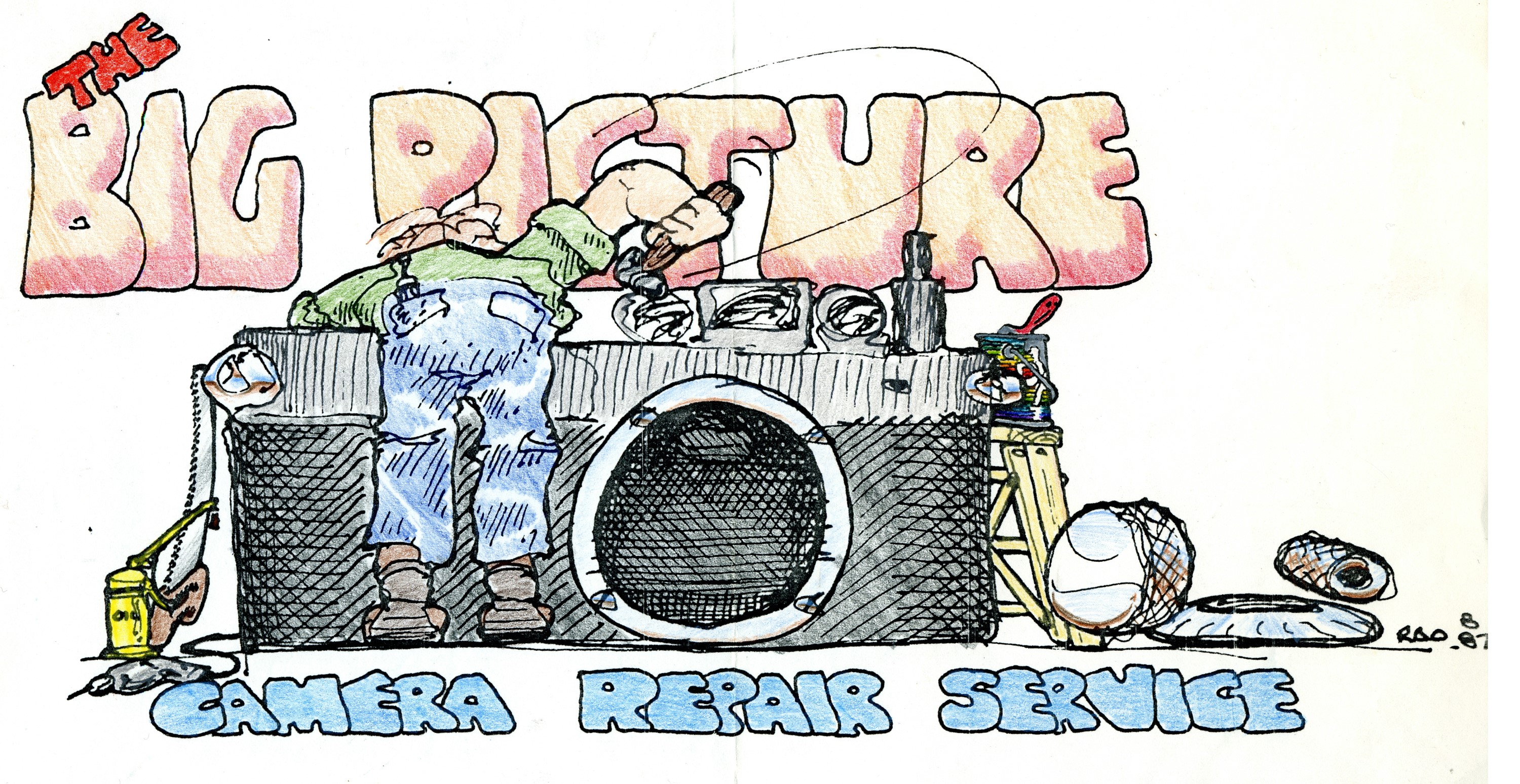
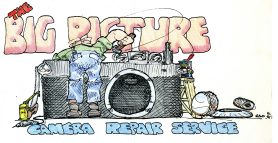









I like this. I run into his website,all the technical notes and pictures on flicker every time I get stuck fixing a camera 🙂 Just yesterday I was Trying to get some information what to do with shutter curtain on Canon IVSB as it looks like a swiss cheese.
It is nice to get to know people like him little better than than just what we are guessing from their work 🙂
Thanks.
Mike, it is a pleasure seeing your emails coming through to me. You have just added a new reason to enjoy. The information I have gleaned from your postings is very large. I’m just starting to get into some old stuff and started with a Konica IIIA, and started a blog of my adventures because of yours and few others. So thank you and keep up the fine work.
Thanks Randy! I appreciate your kind words. The Konica IIIA is a fantastic start, and a camera that is capable of remarkable images! I am sure you’ll love it.
Very good inclusion to your site! I have touch upon Rick Oleson’s comments and advice through many other sites I’ve wandered into over ten years or so… quite a character and an admirable expert and tinkerer, too. He’s a good person to start off with. Some others that come to mind would be those great repair people, like Mark Hama (Yashica), Greg Weber (Konica) and John Hermanson (Olympus). There’s those guys I’d love to hear they’re story at Photo.net who always seems to have something new and good to say about their various cameras they collect; Rick Drawbridge, Walter deGroot, JDMvonW…. maybe also Andrzej Wrotniak and that omnipresent camera manual guy we all hear about and use, Michael Butkus, Jr. There’s so many that come to mind, but they all contribute our adventures in collecting, preserving and using cameras.
Thanks Bob! These are some great suggestions for future guests. I’ll see what I can do!
Great new feature! I’m not a collector – I only have 2.5 film cameras (two, and one shared with my girlfriend – but I’m interested in the history of cameras. I’ve found a lot of interesting stuff through your website, like the history behind the Rollei 35. And though I have little or no experience of camera repair, I found Rick Oleson’s camera drawings equally interesting (they remind me of How to Keep Your Volkswagen Alive). Thanks, and keep up the good work!
An interesting interview. With the internet world of DIY camera repairers it is nice to see an interview with someone who actually knows what he is talking about. I have used his screens for repairs for cusyomerc and sent other customers directly to him. His screens are well made and worth the cost.